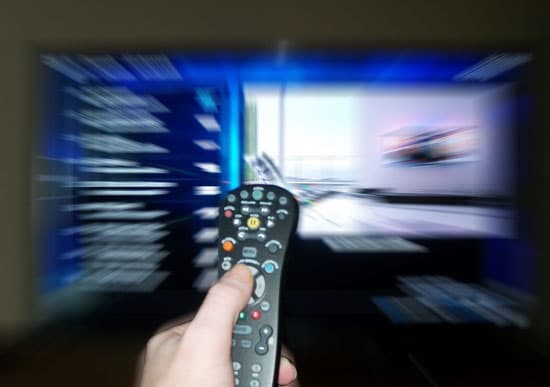Introduction
The need for marketing to ethnic and racial groups has become increasingly important due to the changing demographics and cultural diversity in the United States. As a nation, the United States is a melting pot of nationalities, backgrounds, cultures, and identities. This unique blend has significantly influenced the marketing strategies of various businesses, necessitating the consideration of this increasing diversity.
Moreover, ethnic and racial groups have a significant purchasing power that cannot be overlooked. These groups represent a substantial portion of the consumer market, and their influence on the economy is growing. Therefore, it is crucial for businesses to understand these markets and develop strategies to effectively engage them.
Understanding Ethnic and Racial Groups in Marketing
The United States population is often divided into majority and minority groups with non-Hispanic White people making up the majority. However, the minority groups, consisting of various races, ethnicities, and communities, including Hispanic, Black, and Asian consumers, play a significant role in the market. Understanding these groups are essential for marketers, as they represent a substantial portion of the consumers.
Moreover, the demographics of the United States are rapidly changing. For instance, the Hispanic population in the United States reached over 63 million people in 2020, showing a 23 percent growth since the previous census. This trend signifies the increasing importance of marketing to Hispanic consumers, underscoring the need understand Hispanic consumer insights to effectively engage them.
Role of Cable Television in Ethnic Marketing
Cable television plays a crucial role in ethnic marketing, as it allows marketers to target specific ethnic and minority demographics through tailored programming. Networks like BET (Black Entertainment Television) and Univision have become instrumental in reaching out to African Americans and Hispanics respectively. These platforms cater to the entertainment needs of these communities, thus providing a direct channel for marketers to reach these audiences effectively.
Through these networks, marketers can use tailored products, messages, and spokespeople that resonate with the target audience. For instance, Univision, a Spanish-language television network, has successfully connected with the Hispanic audience by transmitting programming from Mexico, Latin America, and Spain. The NFL is also targeting the Latino community through various initiatives and partnerships.
Advantages for Marketing Targeting Hispanic Households
Hispanic households represent a significant market in the United States. With over 50 million households demonstrating $1 trillion in purchasing power, this group holds significant potential for marketers. Univision, as mentioned earlier, dominates the Hispanic viewing market, providing a prime platform for marketers to reach this demographic.
However, marketing strategies for the Hispanic market need to consider the diversity within this group. Hispanics originate from 20 different countries and consist of various subethnicities, requiring nuanced and tailored marketing approaches. Understanding this diversity and tailoring marketing messages accordingly can significantly increase the effectiveness of marketing efforts.
Marketing to African Americans
The Black population in the United States is the second largest multicultural group, with 46.8 million people in 2020. BET caters to the entertainment needs of African Americans, providing a solid platform for marketers to connect with this demographic. This platform allows marketers to create tailored messages that resonate with this community, increasing the effectiveness of marketing efforts.
Black consumers value social activities that support the group as a whole, and they prioritize determination, self-expression, and community bonds. These values need to be considered in marketing strategies targeting this group. By aligning marketing messages with these values, marketers can create a stronger connection with this demographic, leading to more effective marketing campaigns.
Asian Consumers and Marketing Strategies
The Asian population in the United States has increased, with 19.9 million people in 2020 who identified as single-race Asians. Asian consumers are proud of their heritage, identify well with the American culture, and share the cultural duality characteristic with Hispanic people. This cultural duality allows marketers to create messages that resonate with both their Asian heritage and their American identity.
Asian consumers value collectivism and cultural celebrations, and they are more likely to live in a multigenerational setting. These cultural nuances should guide marketing strategies targeting this group. By understanding and incorporating these cultural nuances in marketing messages, marketers can create a stronger connection with this demographic, leading to more effective marketing campaigns.
Buying Power of Ethnic and Racial Groups
The buying power of Asian Americans, African Americans, and Hispanics has grown significantly over the past 30 years. This growth has had a profound influence on the consumer market in the United States. The Hispanic market, for instance, is the largest minority market in the US and has experienced rapid growth. On the other hand, the Asian American market’s buying power is larger than the GDP of many countries, demonstrating the significant potential of this market.
Given this, companies need to tailor their marketing strategies to cater to these diverse consumer markets. By understanding these markets and tailoring marketing strategies accordingly, companies can tap into their significant buying power, leading to increased sales and profits. Therefore, understanding and effectively targeting these markets is not just a matter of cultural sensitivity, but also a sound business strategy.



Have you noticed that racially ambiguous actors are often used in commercials? My thought is that by making it difficult to guess what nationality the person pitching products is they can reach a broader audience.
Anyone wanting to target a particular demographic can more easily do it by advertising on the channels you mention that already appeal to the desired audience.
That’s true. Maybe their market is ethnic and racial neutral and so they are marketing to a very broad base of viewers.